|
Home
The molecule Physical properties Chemical properties Antimicrobial properties Structure-activity relationships Biosynthesis Chemical syntheses References |
Antimicrobial properties
In the 1950s, when most of the tetracyclines were discovered, their antimicrobial spectrum was broader than of any othen antibiotic then known. Tetracyclines are characterized by their exceptional chemotherapeutic efficacy against a wide range of Gram positive and Gram negative bacteria, richettsia, spirochetes, and large viruses, such as members of the lymphogranuloma group [10]. The main indications for the use of tetracyclines are infections due to Escherichia coli and Haemophilus influenzae, infections of the bile duct, bacterial respiratory disorders including bronchitis prophylaxis, mixed infections arising from the mouth, pharynx, or intestinal tract, brucellosis, tularemia, plague and other pasteurelloses, leptospirosis, lymphogranuloma inguinale, cholera, and rickettsiosis [11]. Because of the development of strains of microorganisms resistant to the tetracyclines, these antibiotics have lost some of their usefulness. They are no longer the drugs of first choice for treatment of staphylococcal, streptococcal, or pneumococcal infections. The individual tetracyclines differ less in their potency that in pharmacokinetic properties such as resorption, tissue diffusion, and elimination [11]:
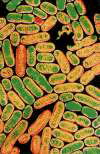
|
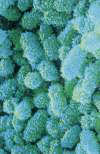
Haemophilus influenzae |

Mycobacterium tuberculosis |

Pseudomonas aeruginosa |
|
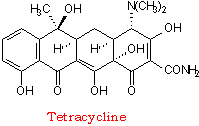 |
||||
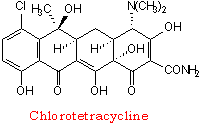 |
||||
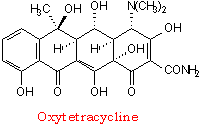 |
How do tetracyclines work?
Tetracyclines inhibit a lot of enzyme reactions essential for the vital processes of bacterial cells. The most sensitive biochemical reaction that is inhibited is the synthesis of proteins [21]. Tetracycline works by binding specifically to the 30S ribosome of the bacteria, preventing attachment of the aminoacyl tRNA to the RNA-ribosome complex. It simultaneously inhibits other steps of the protein biosynthesis. Tetracycline can also alter the cytoplasmic membrane and this in turn causes leakage of nucleotides and other compounds out of the cell. This does not directly kill the bacteria but instead inhibit it.